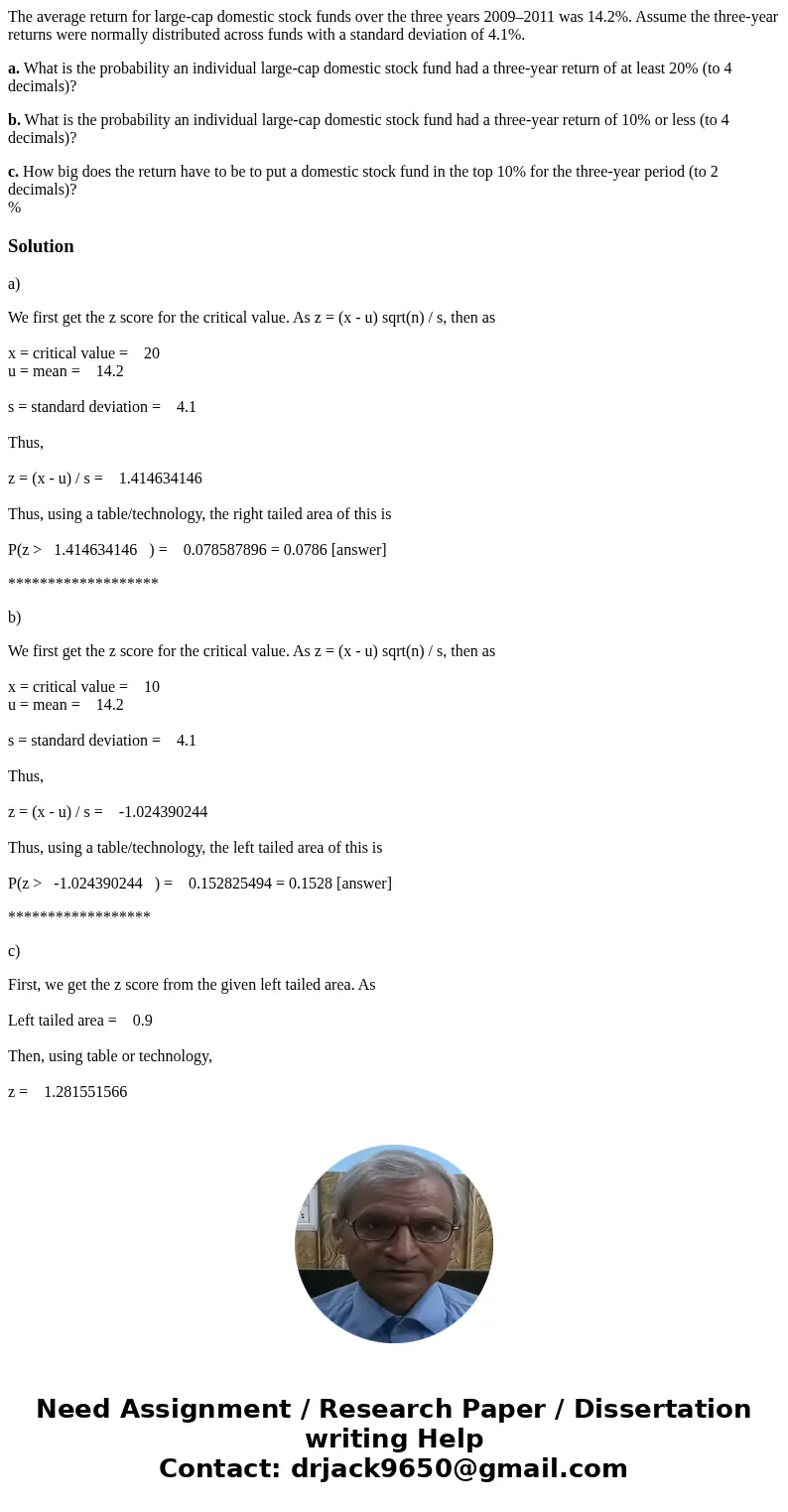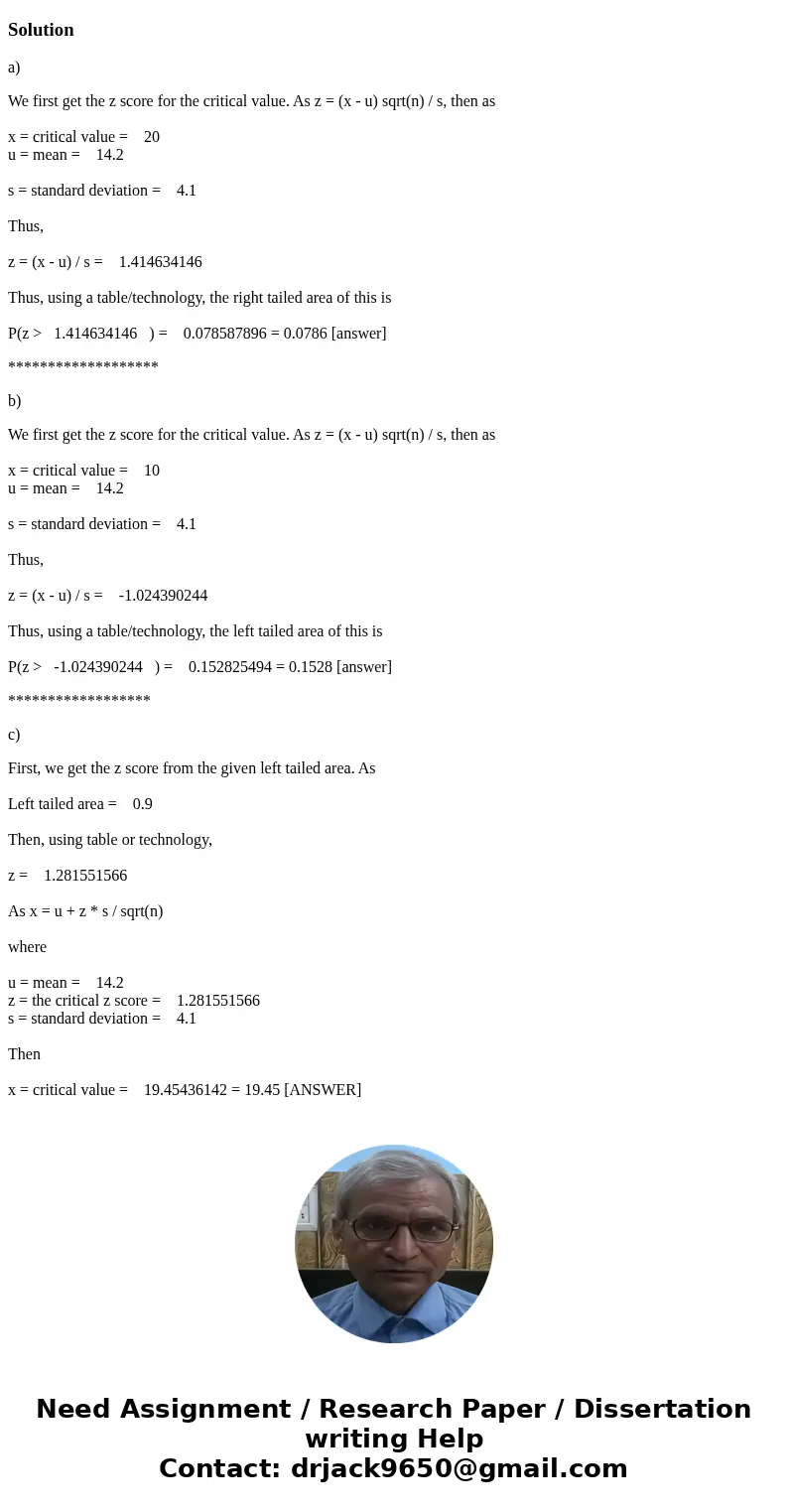The average return for largecap domestic stock funds over th
The average return for large-cap domestic stock funds over the three years 2009–2011 was 14.2%. Assume the three-year returns were normally distributed across funds with a standard deviation of 4.1%.
a. What is the probability an individual large-cap domestic stock fund had a three-year return of at least 20% (to 4 decimals)?
b. What is the probability an individual large-cap domestic stock fund had a three-year return of 10% or less (to 4 decimals)?
c. How big does the return have to be to put a domestic stock fund in the top 10% for the three-year period (to 2 decimals)?
%
Solution
a)
We first get the z score for the critical value. As z = (x - u) sqrt(n) / s, then as
x = critical value = 20
u = mean = 14.2
s = standard deviation = 4.1
Thus,
z = (x - u) / s = 1.414634146
Thus, using a table/technology, the right tailed area of this is
P(z > 1.414634146 ) = 0.078587896 = 0.0786 [answer]
*******************
b)
We first get the z score for the critical value. As z = (x - u) sqrt(n) / s, then as
x = critical value = 10
u = mean = 14.2
s = standard deviation = 4.1
Thus,
z = (x - u) / s = -1.024390244
Thus, using a table/technology, the left tailed area of this is
P(z > -1.024390244 ) = 0.152825494 = 0.1528 [answer]
******************
c)
First, we get the z score from the given left tailed area. As
Left tailed area = 0.9
Then, using table or technology,
z = 1.281551566
As x = u + z * s / sqrt(n)
where
u = mean = 14.2
z = the critical z score = 1.281551566
s = standard deviation = 4.1
Then
x = critical value = 19.45436142 = 19.45 [ANSWER]


 Homework Sourse
Homework Sourse